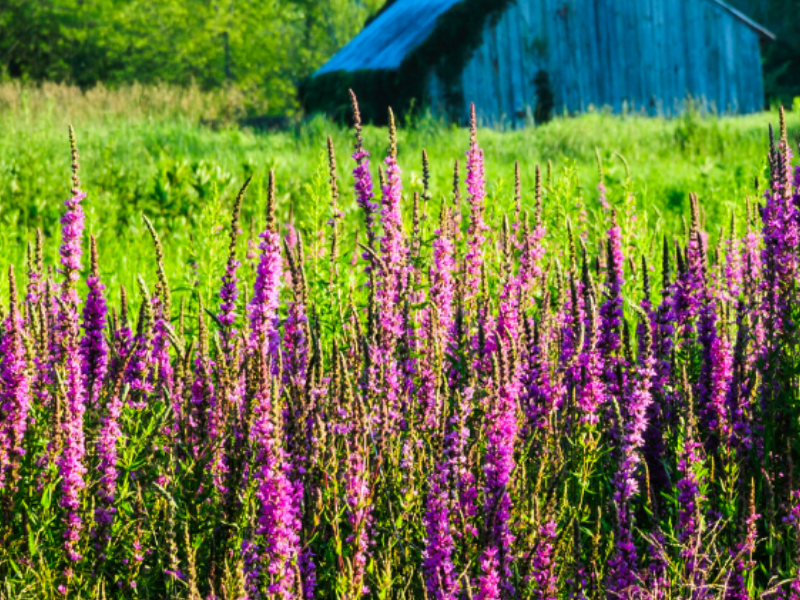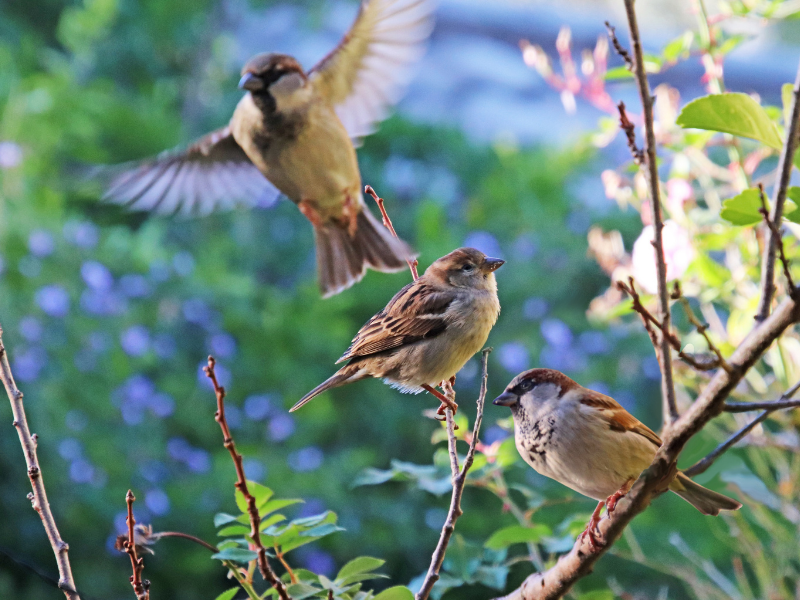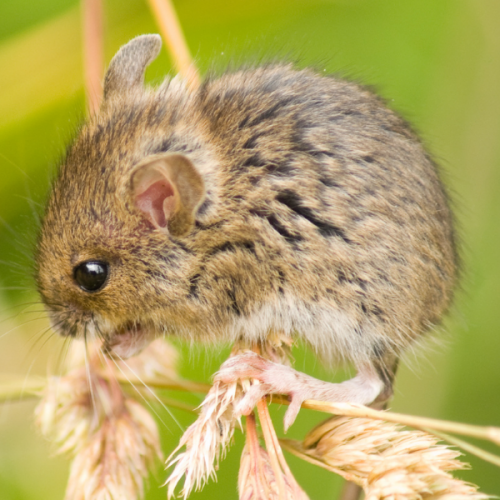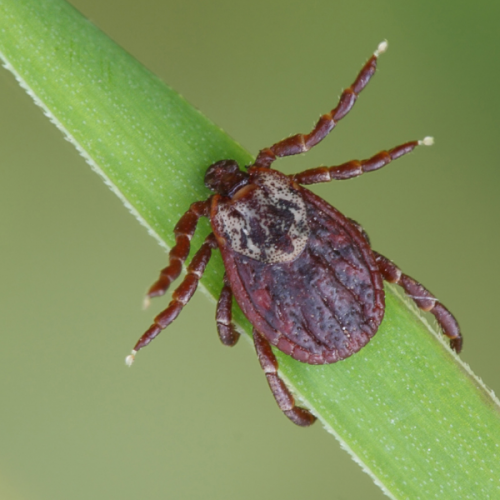
As the owner of Holmes Fine Gardens, I spend a lot of time driving through the neighborhoods of Newtown and its surrounding towns. And since this region is void of skyscrapers or big cities (ok, we have none!), the world around me is clearly in view at all times. I observe lakes, forests, sterile road intersections, underpasses, cul-de-sacs, suburban roads, and property after property with their green spaces in between, filling the voids.
Unfortunately, that void often equates to invasive plants or the competitive plant thugs easily seen from the roadside as I cruise by in my truck. These may include creeping tendrils of bittersweet collapsing and strangling everything in its path, a sea of Purple loosestrife filling entire fields to the brim, walls of Barberry foliage, Autumn olive, or Burning bush, just to name a few of the culprits common to our area.
At certain times of the year, these plants have their day in the sun and are quite pleasing to the eye. From Burning bush ablaze with fiery foliage in the fall to Autumn olives’ sweetly fragrant, shimmering gray-green leaves that entice the senses. These plants are often looked upon with sympathy and saved from the secateurs or herbicide. The mindset being – if nature didn’t want them to thrive, they wouldn’t be here in the first place.

Many of these plants were introduced by either the US Highway Department to help with slope stabilization or wayward travelers returning with cuttings or seeds of ornamental and medicinal plants. Not all non-native plants are as opportunistic – some lure our songbirds and insects with berries and seeds, becoming their dispersal service that has originated from a newly tilled area or spot of barren earth.
Why do we need to worry about these plants? The USDA Forest Service estimates that 42% of our native plants are taken over by invasive species. They outcompete our native flora, and like it or not, many are here to stay. However, giving in to these aggressive plants is not an option. What can we do? We need to pick our battles and fight back in areas that make the biggest impact.

The characteristics of these plants stand out, making them easily identifiable: They are the first plants to leaf out in the spring, they topple native trees and shrubs, they create a line-of-sight driving hazard on tight corners, and they suppress the desirable plants that create the biodiversity that our birds and insects rely on to thrive. Further, they are just an eyesore. In many communities similar to ours, numerous organizations work together to manage these unwelcome pests by replanting with vegetation beneficial to our native fauna.

Invasive plants can also become a public health risk. This may occur between Japanese barberry, ticks, the local mouse population, and Lyme disease. Due to its gnarly, thorny nature, barberry can quickly take hold. Add in its high seed count combined with the plant’s natural ability to alter the pH of the native soil, and you have an invasive plant that can thwart its competitors. The result? The white-footed mouse can now live free and easy because its living quarters are impenetrable, allowing both the mouse and tick population to thrive.
Clearly, I’m not a fan. In areas with a high density of Japanese barberry, there is an increase in tick populations (and mice), which increases the potential for Lyme and other-tick borne illnesses.

For now – because of the need to focus on one concern at this time (bad plants) and the need for brevity to hold your undivided attention – let’s just agree that ticks are a public health concern causing all manners of physical pain and sometimes lasting health concerns.
These unsightly and overgrown areas represent an imbalance that we have all grown so accustomed to seeing, we can hardly imagine what a drive in the country would look like without these plants blocking our view.
At Holmes Fine Gardens, we are passionate about improving the aesthetic and functional landscape that we all participate in, whether observed through the windshield of our car as we drive by or in our backyard. Although this may sound like an enormous task, each of us should be dedicated to helping restore each plot of land we are invited to work on, large or small.
Please call us with questions at 203-270-3331. We are more than happy to survey your land or help develop strategies to manage all aspects of your property.
